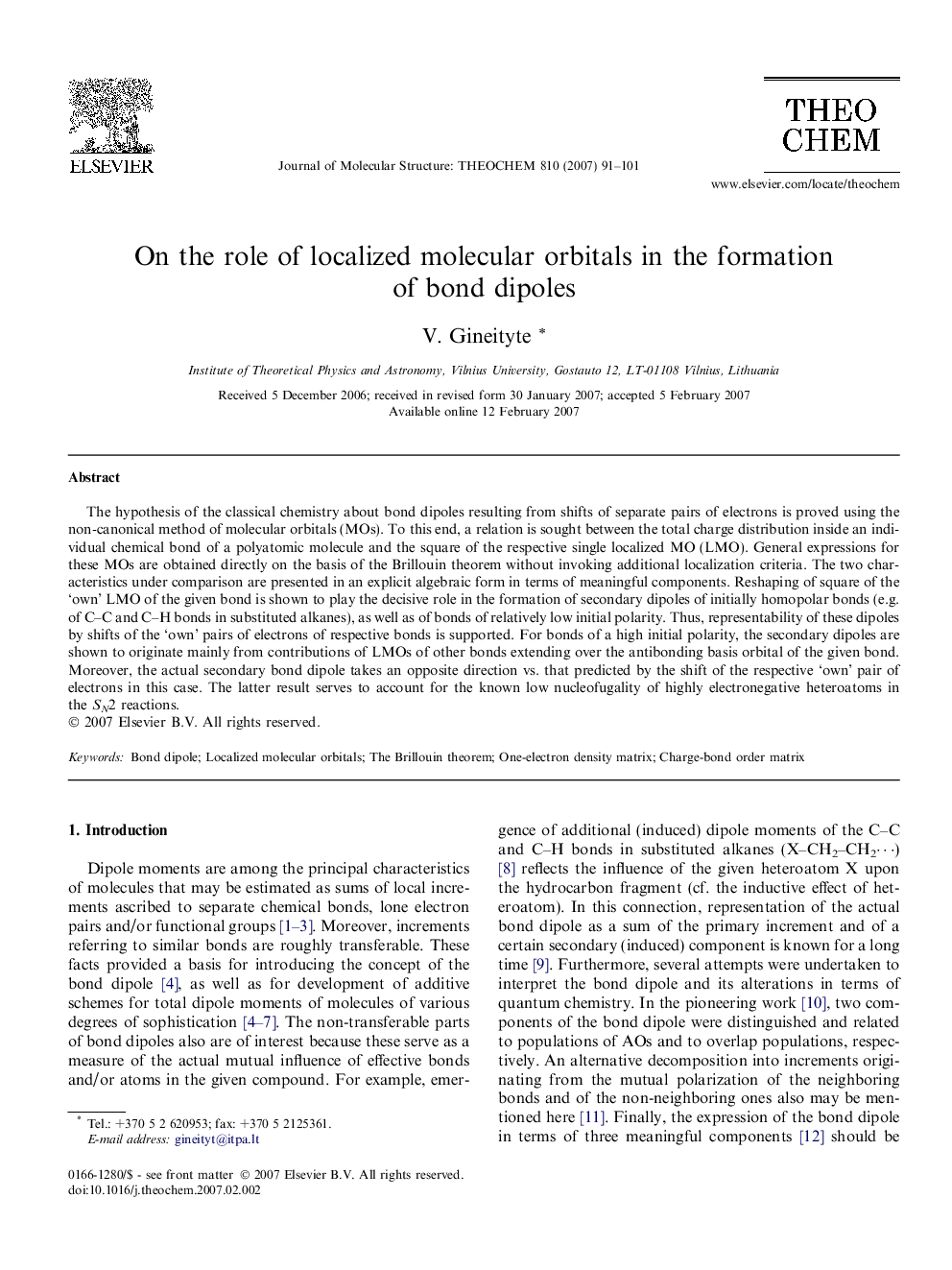| Article ID | Journal | Published Year | Pages | File Type |
|---|---|---|---|---|
| 5418686 | Journal of Molecular Structure: THEOCHEM | 2007 | 11 Pages |
Abstract
The hypothesis of the classical chemistry about bond dipoles resulting from shifts of separate pairs of electrons is proved using the non-canonical method of molecular orbitals (MOs). To this end, a relation is sought between the total charge distribution inside an individual chemical bond of a polyatomic molecule and the square of the respective single localized MO (LMO). General expressions for these MOs are obtained directly on the basis of the Brillouin theorem without invoking additional localization criteria. The two characteristics under comparison are presented in an explicit algebraic form in terms of meaningful components. Reshaping of square of the 'own' LMO of the given bond is shown to play the decisive role in the formation of secondary dipoles of initially homopolar bonds (e.g. of C-C and C-H bonds in substituted alkanes), as well as of bonds of relatively low initial polarity. Thus, representability of these dipoles by shifts of the 'own' pairs of electrons of respective bonds is supported. For bonds of a high initial polarity, the secondary dipoles are shown to originate mainly from contributions of LMOs of other bonds extending over the antibonding basis orbital of the given bond. Moreover, the actual secondary bond dipole takes an opposite direction vs. that predicted by the shift of the respective 'own' pair of electrons in this case. The latter result serves to account for the known low nucleofugality of highly electronegative heteroatoms in the SN2 reactions.
Related Topics
Physical Sciences and Engineering
Chemistry
Physical and Theoretical Chemistry
Authors
V. Gineityte,
